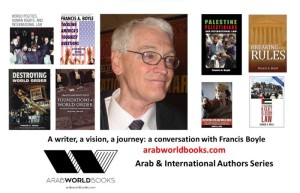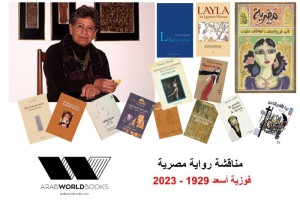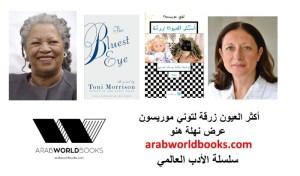Entre scribes et écrivains : Le Champ littéraire dans l'Egypte contemporaine (Between Scribes and Writers: The Literary Field in Contemporary Egypt), Richard Jacquemond, Paris: Actes sud, 2003 pp345
Reviewed by David Tresilian
Al-Ahram Weekly
For many years a resident of Cairo, Richard Jacquemond, a professor of Arabic in France, has produced in the present book what may be the best and most comprehensive study of contemporary Egyptian writing in Arabic for the foreign reader. Based on his doctoral thesis, but adapted for the general reader, Entre scribes et écrivains: Le Champ littéraire dans l'Egypte contemporaine is a survey of the Egyptian literary scene that manages to describe, in equal detail and with the same authority, the works of canonical Egyptian and Arab authors, such as Naguib Mahfouz, as well as those of less well-known, regional and "para-literary" writers.
The works of many of the writers mentioned have themselves been translated into French by Jacquemond, generally also being published by independent French publisher Actes sud, which now has the most comprehensive list of Arabic literature in translation of any French publisher, and possibly of any publisher worldwide. Anyone not having access to Arabic and wishing to research topics such as the state of contemporary Egyptian and Arab poetry, the fortunes of the 1960s generations of Egyptian writers, the relation of "high" literature to that bearing less prestige, such as sentimental novels, detective fiction, cartoon strips and adventure stories, the state of contemporary Egyptian women's writing or how all these works are distributed in a common Cairene "literary field" will now have first to turn to Jacquemond.
As Jacquemond notes in his acknowledgements, his main theoretical debt in this study has been to the late French sociologist Pierre Bourdieu, particularly to Bourdieu's notion of the "literary field", the workings of which Bourdieu himself anatomised for late 19th-century France. Jacquemond has taken over this notion and applied it to late 20th-century Cairo, distributing the various authors considered topographically from those bearing the least prestige among the Cairene intelligentsia, but nevertheless being the most-widely read, to those bearing the most prestige, but having a more limited audience.
Jacquemond considers the sources of cultural prestige in the Egyptian case, looking at the special role played by the Arabic language in conferring canonical status on some writers and not others, as well as the relation of the contemporary authors considered to the late 19th and early 20th century Arab nahda, or renaissance, important representatives of which lived and worked in Cairo. A certain kind of cultural prestige can also be conferred by the relationship of a given writer to the Arab heritage, and another kind can come from the way a writer appropriates and transforms literary elements from elsewhere, notably from European writing.
A further kind of prestige can come from the reputation a writer enjoys abroad, Jacquemond considering both foreign writers published in translation in Cairo and Egyptian writers published in translation abroad. Some writers are not considered to be really writers at all, being thought of as marginal to the centre of the literary field, and Jacquemond comments valuably on the cultural arbiters, institutions and opinion-formers that operate in the Cairene case, analysing literary prizes, the literary policies of major Cairo newspapers, as well as those of television and radio, and the publishing policies of Cairo publishers, both public and private sector.
He also comments on the influence of the kinds of exercises and of literature set on school syllabuses and at university in the formation of taste, the operations of state and religious censorship, and on future prospects for the Egyptian literary scene, which, as Jacquemond remarks, is the oldest and most extensive of any modern Arab country. Jacquemond concludes that this literary scene presently has several defining features, notably the special status the culture confers on writers despite changing political and social circumstances, the role of the Arab publishing industry since the 1970s, which has opened up sometimes lucrative publishing options for Egyptian writers, and the new prominence in the Cairene literary field of regional and women writers, as well as those writing in Egyptian dialects of Arabic.
Though not all Egyptian writers have historically written in Arabic, many choosing to write in Turkish, French or English instead, Egyptian writing has been largely monolingual since the 1950s.
Jacquemond's main thesis concerns the special status that he says an Egyptian writer enjoys, if he or she is to be considered as being somewhere near the centre of the literary field, this status being signalled in the book's title, Entre scribes et écrivains. A scribe is a writer who has an official function, his or her writing being subordinate to that function and restricted to certain defined commissions. A writer, on the other hand, has traditionally had a certain imaginative freedom, sometimes even being taken as a person possessing a special insight into society or into human subjectivity, and this conception of the writer, though now ebbing from what may have been its high-water mark, still commands a measure of assent.
Egypt's writers, Jacquemond holds, can be distributed along a scale of "scribes and writers", some of them holding official posts and reproducing approved ideas and others rejecting state functions and adhering to notions of imaginative and critical freedom. Most fall somewhere in between the two extremes that structure the field, and Jacquemond quotes approvingly from literary critic Ferial Ghazoul, writing on Egyptian poet Mohamed Afifi Matar, to the effect that Matar has managed a "magical dualism, in which one finds on the one hand symbolist force and on the other a solid link to Egypt and to Arab and Islamic culture".
This "magical dualism" in various forms is a structural principle of the Egyptian literary field, Jacquemond feels, since the "total writer", those achieving canonical status, is he or she who is at once imaginatively free and socially engaged, fulfilling functions both as a guide and tutor and as an imaginative writer. In this way, he or she may achieve originality in his or her thought and expression while also respecting the norms and traditions of national and religious culture.
Jacquemond gives various examples of his thesis. One of the most interesting concerns his analyses of the work of Yehia Al-Taher Abdullah (1938-1981) and of Naguib Surour (1932-1978), both of whom started their literary careers as outsiders in the 1960s but have now achieved posthumous canonical status. Pointing out that the writers of the inter-war period, up to and including the Cairo Trilogy of Naguib Mahfouz (1956-57), had adopted a common project of literary and cultural renewal that took "the literary forms and techniques of the modern West and gave them a local content", Jacquemond shows the significance of the 1960s generation's break with this programme, among that generation being Al-Taher Abdullah in prose writing and Surour in poetry and theatre.
While the cultural work of Taha Hussein, for example, had moved fascinatingly between the poles of the Arab and Islamic heritage and the innovations offered by modern European (French) civilisation, Hussein himself achieving a profound double culture, writers such as Abdullah and Surour looked less across the Mediterranean and more into the recesses of local cultural space, oscillating as they did so between the poles of a further magical dualism, that between ta'sil (rootedness) and tagdid (renewal). However, as they did so they too attempted to speak from a popular position, while at the same time exercising to the full their imaginative and critical independence.
This programme, reformulating the terms of a previous cultural project, made background, or previously culturally non-prestigious, features of local content into sources of experiment and innovation. In addition, such a cultural programme, "at once built from local elements and belonging to the avant-garde", brought together popular and experimental elements in an unusual way, such that writers were able to address a popular audience in familiar terms while at the same time retaining their commitment to formal experiment and criticism.
In his Hikayat lil-Amir Hatta Yanam (Stories to Help the Prince Sleep, 1978), for example, Al-Taher Abdullah "takes up the structure of the Thousand and One Nights, a series of stories connected by a narrator-storyteller and her listener". Using the "double contrast...of a poetic writing that works over and purifies the rhetorical figures and imaginative elements of popular narrative and the cruelty and tragic character of the tales, as well as the timelessness of this kind of writing when set against the obvious and brutal reference of each story to contemporary society", Al-Taher Abdullah hoped to address a popular audience directly while preserving his intellectual function.
Surour, Jacquemond says, hoped to achieve something similar in his popular, yet avant-gardiste theatre pieces, notably in his 1964 play Yasin wa Bahiyya (Yassin and Bahiyya). This attempted to achieve the "utopia of reconciliation of theatre with the people that characterised Surour's artistic programme" through the intellectual recuperation and re-presentation of a popular tale.
"I have to speak and to write," Al-Taher Abdullah wrote, "since my country does not read. I don't think much can be gained from addressing oneself to intellectuals, but when I ask myself who I am writing for, I observe that the people I write about don't read what I write. They are exiled, alienated and disinherited, which is why I think it's better to say things out loud. Before writing out my stories I tell them a thousand times to a thousand people."
One of the pleasures of Jacquemond's book is its very French concern to extrapolate abstract patterns, the study being constructed around backbone concepts, looking at how these structure the literary field. Some readers may see opportunities for re-presenting Jacquemond's argument in the form of diagrams, as indeed Bourdieu sometimes did in Les règles de l'art, genèse et structure du champ littéraire (The Rules of Art: Origins and Structure of the Literary Field), his study of the 19th-century French literary field, recently translated into Arabic by Ibrahim Fathi.
However, even flat-footed anglo-saxon readers, lacking Gallic brilliance but reading French, will find much to occupy them in the present book. Scrupulously and clearly written, and obviously the result of many years of research and reflection, Entre scribes et écrivains contains fascinating material that can be read discretely, without reference to the book's larger thesis. It also contains useful appendices containing "bio-bibliographical notices" for contemporary Egypt's writers and critics and lists of state literature and other prizes.
Jacquemond's book, itself perhaps the expression of a kind of magical dualism in its fertile mix of a deep knowledge of contemporary Egypt and of French literary- sociological theory, is testimony to the dynamic and imaginative state of Arabic studies in France. It is to be hoped that it will be translated into English and Arabic, in order that it may contribute as widely as possible to contemporary debate.




